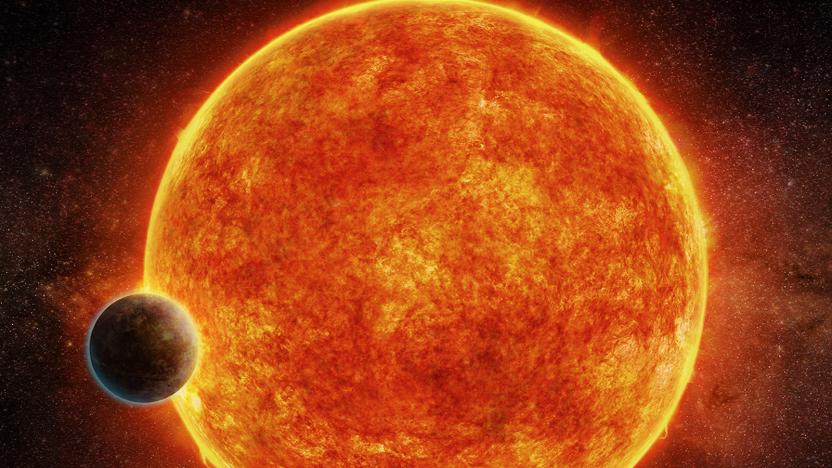Harvard-smithsonianCenterForAstrophysics
Latest

Nearby 'super-Earth' may be our best shot yet at finding alien life
Scientists are finding potentially life-bearing planets at a surprisingly high rate, but the latest may be more tantalizing than most. A research team has discovered LHS 1140b, a temperate rocky exoplanet orbiting the habitable zone of a tiny star 40 light years away. While it's not the first such planet found relatively nearby, it's an ideal candidate for study -- since it transits in front of its host, astronomers could look for water and oxygen in the planet's atmosphere by watching how it filters starlight. The star itself also doesn't emit much high-energy radiation, so there's a greater chance of life than you might see around stars like TRAPPIST-1.

Close-by exoplanet may have an oxygen-rich atmosphere
At last, scientists might have spotted a rocky exoplanet with an oxygen-heavy atmosphwere... only it's not the alternate Earth you might be hoping for. Astronomers have determined that GJ 1132b (aka Gliese 1132b), a relatively close 39 light years away, stands a real chance of having oxygen-rich skies. However, it's also scorching hot at 450F (232C). With that kind of heat, any water vapor would have a greenhouse effect -- the atmosphere would cook the surface (turning it into a magma ocean) and eliminate any hope of life.

Scientists spot runaway galaxies
It's well established that runaway stars and planets are a cosmic reality, but runaway galaxies? Yes, amazingly enough, those exist. Scientists have discovered at least 11 galaxies moving so quickly (up to 6 million miles per hour) that they're escaping the gravitational tug of their host clusters. Most likely, these wayward celestial bodies are the result of three-way interactions -- a small elliptical galaxy tied to a larger counterpart will fly off into space when another big galaxy gets close enough. It could take a long time before astronomers have a better sense of how common stray galaxies might be, but it's already apparent that the universe is messy at its grandest scale. [Image credit: NASA, ESA and the Hubble Heritage Team]

Scientists create simulation of the universe, reenact 14 billion years in a few months (video)
Are animations of Curiosity's Mars landing not enough to feed your space exploration appetite? Try this on for size: a group of scientists from the Harvard-Smithsonian Center for Astrophysics and the Heidelberg Institute for Theoretical Studies have generated what's billed as a full-fledged simulation of the universe. Arepo, the software behind the sim, took the observed afterglow of the big bang as its only input and sped things up by 14 billion years. The result was a model of the cosmos peppered with realistically depicted galaxies that look like our own and those around us. Previous programs created unseemly blobs of stars instead of the spiral galaxies that were hoped for because they divided space into cubes of fixed size and shape. Arepo's secret to producing accurate visualizations is its geometry; a grid that moves and flexes to mirror the motions of dark energy, dark matter, gasses and stars. Video playback of the celestial recreation clocks in at just over a minute, but it took Harvard's 1,024-core Odyssey super computer months to churn out. Next on the group's docket is tackling larger portions of the universe at a higher resolution. Head past the jump for the video and full press release, or hit the source links below for the nitty-gritty details in the team's trio of scholarly papers.

